

Unlock the potential of the Nikon Z6III high-speed hybrid camera for microscopic photography and videography: our LM adapter solutions with integrated precision optics make it possible
The Nikon Z6III is an advanced, mirrorless full-frame system camera in the mid-range segment. Launched in the summer of 2024 as the successor to the Nikon Z6II, it is geared towards ambitious prosumers and professional users. The camera body weighs just 750 grams and features a lightweight, compact design. It is priced at around € 2,200 (as of June 2025).
With the introduction of the new 24.5-megapixel BSI CMOS full-frame sensor, which according to Nikon is partially stacked, the image processing speed of the Z6III has pushed beyond that of the predecessor model.
This allows for a higher burst rate, faster autofocus and an improved frame rate for slow-motion video recording. When using the electronic shutter, the fastest shutter speed available is 1/16,000 sec, a significant improvement over the 1/8,000 sec of the previous model.
In our test shots and measurements, focusing on single image captures at the lowest ISO setting, we observed a slight decrease in the maximum dynamic range relative to the Z6III’s predecessor, the Z6II, which prioritises higher speeds as its central design objective. By comparison, Nikon’s flagship models such as the Z7 II, which have a 45 MP full-frame sensor, deliver much better dynamic range.
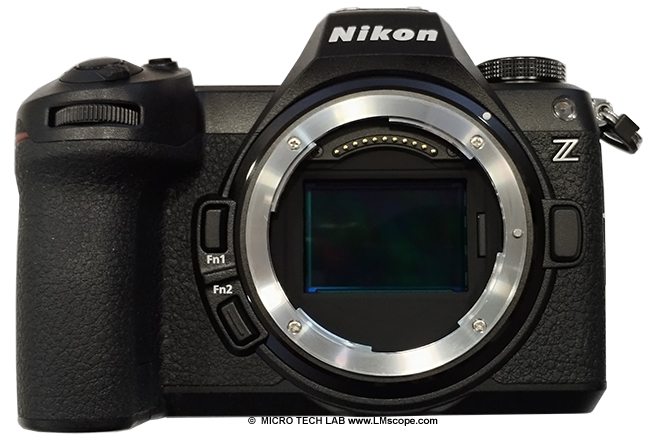
The Z6III excels in video recording. With up to 240 frames per second in Full HD – amounting to up to 10x slow motion – the camera is extremely good at playing back fast processes at a slower speed for detailed analysis. For its price segment, this is really a great frame time. The powerful EXPEED 7 processor, which is also used in Nikon’s flagship Z8 and Z9 models, provides high performance and fast data processing, which is essential for both high-speed continuous shooting and video recording. Borrowing from its high-end siblings, the Z6III also incorporates advanced video features, including internal RAW video recording up to 6K/60p and 6K oversampling to achieve superior 4K video quality (the higher 6K resolution is downscaled to 4K for the final output). In addition, the Z6III also has Pre-Release Capture, with a buffer time limited to 1 second.
The Z6III is also capable of outputting 4K video over HDMI to a high-resolution external monitor.
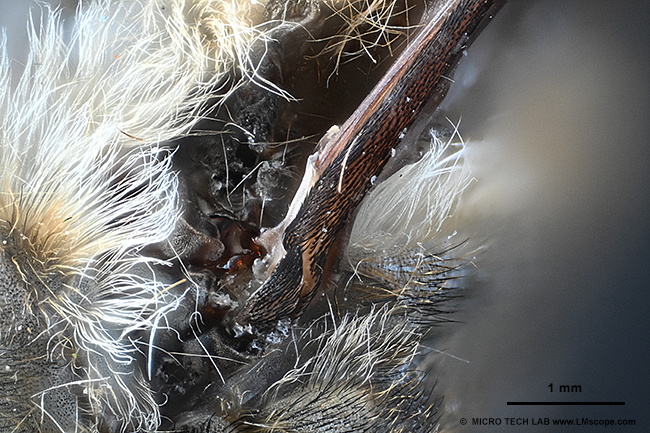
Shown in the image: horsefly; image taken with the Nikon Z6III and the LM photomicroscope
Overview of key camera features:
- 24.5 megapixel BSI CMOS full-frame sensor, partially stacked
- Shutter speed from 1/16,000 to 900 sec with electronic shutter in photo mode
- Continuous shooting at up to 60 fps at maximum resolution (4K) with a maximum buffer depth of 200 frames
- ISO range 100 to 64,000 (expandable to 50 to 204,800)
- Video recording in 4K with 6K oversampling, continuous recording time up to 125 minutes
- 4K 60 fps internal RAW video recording, Full HD video with 240 fps for 10x slow motion recording
- USB 3.2 type C for data transfer, continuous power and charging
- Two memory card slots for SD cards (one for CFexpress Type B cards and one for SDHC/DSXC/UHS I and UHS II cards)
- HDMI Type A interface (clean HDMI) with 4K resolution (3840x2160, 120p)
- Vari-angle touchscreen LCD monitor: 8.1 cm (3.2 inch) TFT colour LCD screen with 2.1 million pixels
- 5-axis in-body image stabilisation
- Lens mount: Nikon Z-mount
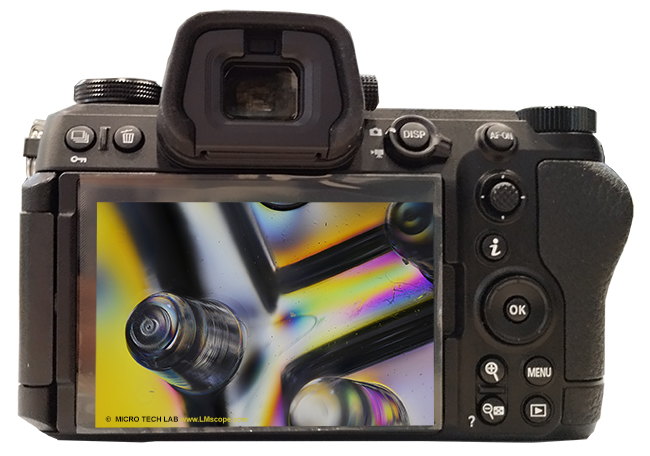
Equipped with a 24.5 MP full-frame sensor, the readout speed, according to Nikon, is approximately 3.5 times faster than the previous-generation Z6II. The unique aspect of the partially stacked sensor in the Nikon Z6II is that it strikes a compromise between the performance of a fully stacked sensor (as in the Z8 and Z9) and the cost implications associated with this sensor design.
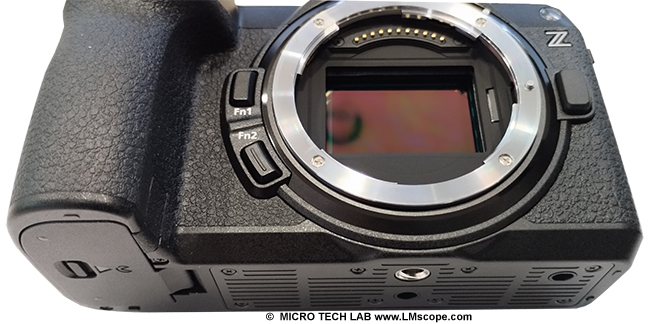
Thanks to state-of-the-art camera technology, the image quality achieved far surpasses that of conventional C-mount microscope cameras. When the electronic shutter is activated, the Z6III achieves a shutter speed of 1/16,000 seconds.
The native ISO range is between 100 and 64,000, with an extended range up to ISO 204,800. The sensor is exceptionally light sensitive, with the widest dynamic range achievable at the lowest ISO setting.
For low-light applications, the maximum exposure time can be set to a long shutter speed of 900 seconds (15 minutes). This allows the camera to be used at very low fluorescence intensity levels or as photobleaching protection for living cells.
Attaching the camera to the microscope is very simple. First, the adapter solution is fastened onto the camera’s Z-Mount bayonet, and then the combined camera-adapter assembly is attached to the phototube or eyepiece tube of the microscope.
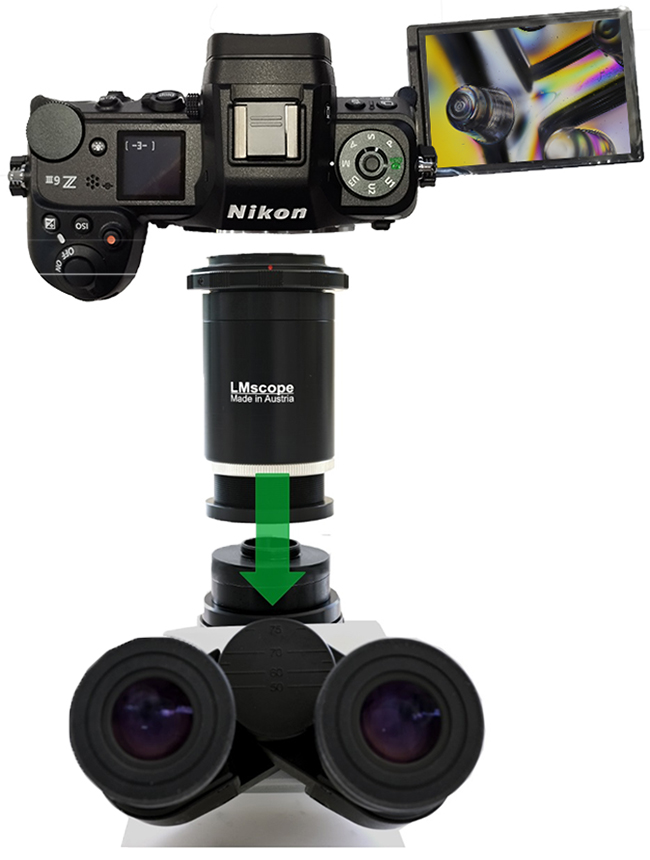
We recommend controlling the camera from a PC/Mac using the versatile Nikon NX Studio software. It allows the user to adjust all camera settings in Live View on the computer, release the shutter remotely and save images directly to the computer’s hard drive.
The Z6III can also be used as a webcam with the Nikon Webcam Utility (Windows), which is available for download at the Nikon Download Center.
As an alternative, the large, flexible TFT LCD touchscreen is a practical option. Its articulating design lets you work from a range of angles, which allows flexible viewing of the live image at all times.
If the camera is not controlled remotely via computer, we still recommend using a control release to avoid any unwanted motion blur.
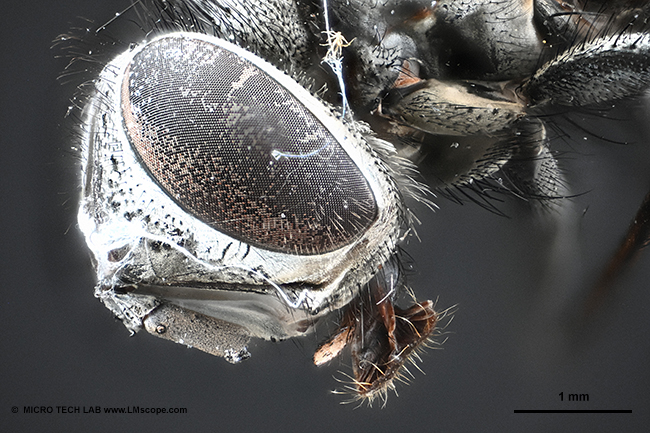
Shown in the image: fly head; image taken with the Nikon Z6III, LM microscope adapter and LM photomicroscope
Conclusion: The Nikon Z6III is a highly capable, compact mirrorless camera with excellent image quality and video capabilities. With our LM microscope adapters, which are available for both phototubes and eyepiece tubes, the camera can be attached to virtually any microscope. Its enhanced processing power makes the Z6III an ideal choice for capturing moving objects, such as microorganisms, or for documenting fast processes. It also boasts impressive video capabilities, enabling the recording of detailed, high-resolution slow-motion footage.
On the downside, for single image captures, the Z6III doesn’t offer an improvement in dynamic range compared to its predecessor. For microscope applications that demand a maximum of dynamic range, we therefore recommend the slightly more costly Nikon Z7 series.
08.07.2025New LM Digital Adapter for: Nikon Z9 / Nikon Z8 / Nikon D6 / Nikon Z6III / Nikon Z6 / Nikon Z6II / Nikon Z7 / Nikon Z7II / Nikon Z5 / Nikon Z50 II / Nikon Z50 / Nikon Z30 / Nikon Z fc / Nikon D850 / Nikon D780 / Nikon D5 / Nikon D4s / Nikon D4 / Nikon D750 / Nikon D500 / Nikon D810 / Nikon D800 / Nikon D800E / Nikon Df / Nikon D610 / Nikon D600 / Nikon D7200 / Nikon DS-Qi2 (Microscope Camera) / Nikon D3x / Nikon D3S / Nikon D7100 / Nikon D7000 / Nikon DS-Ri2 (Microscope Camera) / Nikon D7500 / Nikon D700 / Nikon D3 / Nikon D5500 / Nikon D5200 / Nikon D5300 / Nikon D300 / Nikon D3500 / Nikon D3400 / Nikon D5100 / Nikon D3200 / Nikon D300S / Nikon D5600 / Nikon D3100 / Nikon D5000 / Nikon Coolpix S8100 / Nikon Coolpix S9100 / Nikon Coolpix P500 /